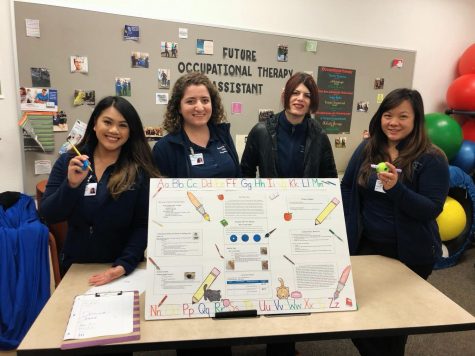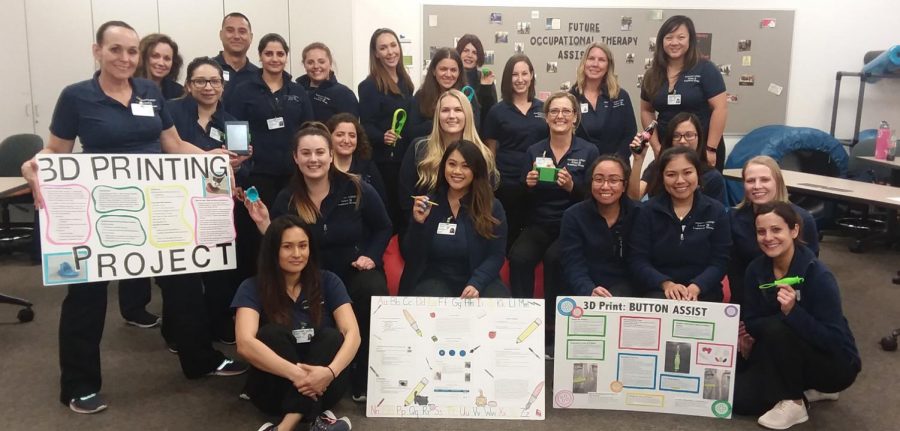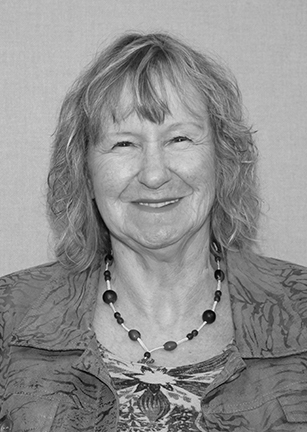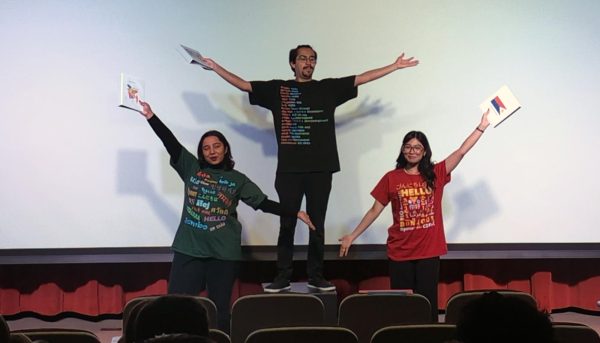Helping Hands
Classroom 251 in the Health Sciences building buzzed with excitement on the evening of March 5 as second semester OTA students and faculty members anticipated the presentation of group projects.
April 12, 2019
The 27 students divided into six groups. They were presented with a fictional client afflicted with an upper extremity deficit. Utilizing a 3D printer, the groups were expected to devise or improve an adaptive device to assist the fictional clients with an everyday task. The students were also expected to highlight any existing device on the market for practical functionality as well as a price comparison.
The student creations were much less expensive than the marketed products in all the examples. Some of the modified devices exceeded the capabilities of implements already on the market.
The six projects were varied to adapt to the clientèle’s needs for assistance devices to improve daily functioning. Included were:
•A modified holder used for a left hand missing the thumb. The user was able to stabilize a Kindle and prevent it from slipping out of their grip. Cost: 25 cents.
•A versatile wall or cupboard mounted bottle opener to facilitate a one-handed amputee who drinks a lot of bottled beverages. Cost: 32 cents, plus a dime.
•An universal jar opener customized to fit varying sized lids. Used for a client missing four digits to assist with everyday functioning. Cost: 78 cents.
•A modified writing instrument holder shaped like a squashed sphere. The purpose of use is for a dominant hand, weakened by a neuromuscular disorder. This device allowed individuals to continue their careers; for example, a teacher could continue working. This was an original creation. Cost: 50 cents.
• A buttonhook designed with a zipper pull on the reverse end, a key-holder and a handle grip for bags with narrow handles. Customized for a mother afflicted with rheumatoid arthritis so she can continue to provide care for her children. Cost: 60 cents.

3D Adaptive Pencil Grip
•A two-handled receptacle to fit boxed beverages to reduce spills. Designed for a Down syndrome client with reduced motor function of both hands. It has been nicknamed “Grip and Sip.” Cost: $2.05.
Key attendees of the presentation included the program director, Christi Vicino, field work director Joyce Fries and professor Kathy Kozlik, who directed the projects.
Vicino reminisced when the OTA program initiated in 1991. It was a part of the ROP Program and situated in a mobile building in a college parking lot.
“The original program founder and director Carolyn Sushan and I worked hard to get the program going,” Vicino said.
The current accredited OTA program is a fast-paced two-year schedule of classroom learning and field experience to prepare the students for their future occupation. Completion of Associate Degree OTA program allows the graduates to apply for national certification and obtain the title of Certified Occupational Therapy Assistant.
Presently, the market for OTAs is increasing with new employment and educational opportunities. Additional information and criteria can be located on the college website.
An OTA Program Preview Informational Meetings is scheduled for April 23 from 9 to 10:30 a.m. in 34-250.














